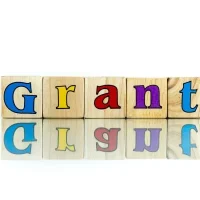The grant landscape for non-governmental organizations (NGOs) is a complex and ever-evolving ecosystem that requires a nuanced understanding to navigate effectively. At its core, the grant landscape consists of various funding sources, including government agencies, private foundations, corporate sponsors, and international organizations. Each of these entities has its own set of priorities, eligibility criteria, and application processes.
For NGOs, understanding these dynamics is crucial for identifying suitable funding opportunities that align with their mission and objectives. Moreover, the grant landscape is influenced by broader socio-economic trends and policy changes. For instance, shifts in government priorities can lead to increased funding for specific sectors, such as environmental conservation or social justice initiatives.
Conversely, economic downturns may result in tighter budgets and reduced funding availability. Therefore, NGOs must stay informed about these trends and adapt their strategies accordingly. Engaging in continuous research and networking within the sector can provide valuable insights into emerging funding opportunities and help organizations position themselves effectively within the grant landscape.
Identifying potential grant opportunities
Researching Grant Opportunities
This research process enables NGOs to identify grants that match their objectives, increasing the chances of securing funding. By leveraging these databases, NGOs can streamline their search and focus on the most relevant opportunities.
Staying Informed through Networking and Newsletters
Additionally, subscribing to newsletters from relevant foundations and government agencies can provide timely updates on new grants and funding initiatives. Networking plays a pivotal role in uncovering hidden grant opportunities. Engaging with other NGOs, attending conferences, and participating in workshops can facilitate connections with funders and fellow practitioners who may share valuable insights about available grants.
Building Strategic Relationships
Furthermore, building relationships with local community foundations can be particularly beneficial, as they often have a deep understanding of regional needs and can guide NGOs toward appropriate funding sources. By combining diligent research with strategic networking, NGOs can create a robust pipeline of potential grant opportunities tailored to their specific needs.
Creating a Robust Pipeline of Grant Opportunities
This multi-faceted approach allows NGOs to stay ahead of the curve and capitalize on emerging funding opportunities, ultimately increasing their chances of securing the grants they need to drive their projects forward.
Navigating the grant application process
Navigating the grant application process can be daunting for many NGOs, especially those new to the world of grant writing. The first step is to carefully read the grant guidelines provided by the funder. These guidelines outline essential information such as eligibility criteria, application deadlines, required documentation, and evaluation criteria.
Understanding these parameters is crucial to ensure that the application meets all necessary requirements and stands out among numerous submissions. Once familiar with the guidelines, NGOs should develop a clear timeline for the application process. This timeline should include milestones such as drafting the proposal, gathering supporting documents, and submitting the application.
It is also advisable to allocate time for revisions and feedback from colleagues or mentors who can provide constructive criticism. Additionally, NGOs should be prepared for potential follow-up questions or requests for additional information from funders after submission. By approaching the application process methodically and proactively, organizations can enhance their chances of success.
Building a compelling grant proposal
A compelling grant proposal is the cornerstone of successful fundraising efforts for NGOs. To create a proposal that captures the attention of funders, it is essential to articulate a clear and impactful narrative that outlines the organization’s mission, objectives, and the specific project for which funding is being sought. This narrative should not only highlight the problem being addressed but also demonstrate how the proposed project will create meaningful change within the community.
In addition to a strong narrative, a well-structured proposal includes detailed information about the project’s goals, target audience, methodology, budget, and evaluation plan. Funders want to see that NGOs have a clear plan for implementation and a strategy for measuring success. Including data and evidence to support claims about the need for the project can further strengthen the proposal.
Visual aids such as charts or graphs can also enhance clarity and engagement. Ultimately, a compelling grant proposal combines storytelling with solid data to create a persuasive case for funding.
Leveraging partnerships for grant funding
Partnerships can significantly enhance an NGO’s ability to secure grant funding by pooling resources, expertise, and networks. Collaborating with other organizations can lead to more comprehensive project proposals that address complex social issues from multiple angles. For instance, an NGO focused on education might partner with a health organization to create an integrated program that addresses both educational attainment and health outcomes in underserved communities.
When forming partnerships for grant applications, it is essential to establish clear roles and responsibilities among partners. This clarity ensures that each organization understands its contributions to the project and how they will work together to achieve common goals. Additionally, funders often view collaborative proposals favorably because they demonstrate a commitment to collective impact and resource sharing.
By leveraging partnerships effectively, NGOs can enhance their credibility and increase their chances of securing funding.
Ensuring sustainable funding for future projects
While securing grants is vital for immediate project needs, ensuring sustainable funding for future initiatives is equally important for long-term success. One effective strategy is to diversify funding sources by exploring various avenues beyond traditional grants. This may include individual donations, corporate sponsorships, membership programs, or social enterprise models that generate revenue while furthering the organization’s mission.
Building strong relationships with donors is crucial for fostering long-term support. Regular communication with funders about project progress and outcomes can help maintain their interest and investment in the organization’s work. Additionally, showcasing success stories through newsletters or social media can keep donors engaged and encourage them to continue their support.
By adopting a multifaceted approach to fundraising and prioritizing donor relationships, NGOs can create a sustainable financial foundation that allows them to thrive in an increasingly competitive landscape. In conclusion, mastering grant writing and fundraising requires a comprehensive understanding of the grant landscape, diligent research to identify opportunities, strategic navigation of the application process, compelling proposal development, effective partnership leveraging, and sustainable funding strategies. By implementing these actionable insights and strategies, NGOs can enhance their capacity to secure funding and ultimately achieve their mission-driven goals.








































